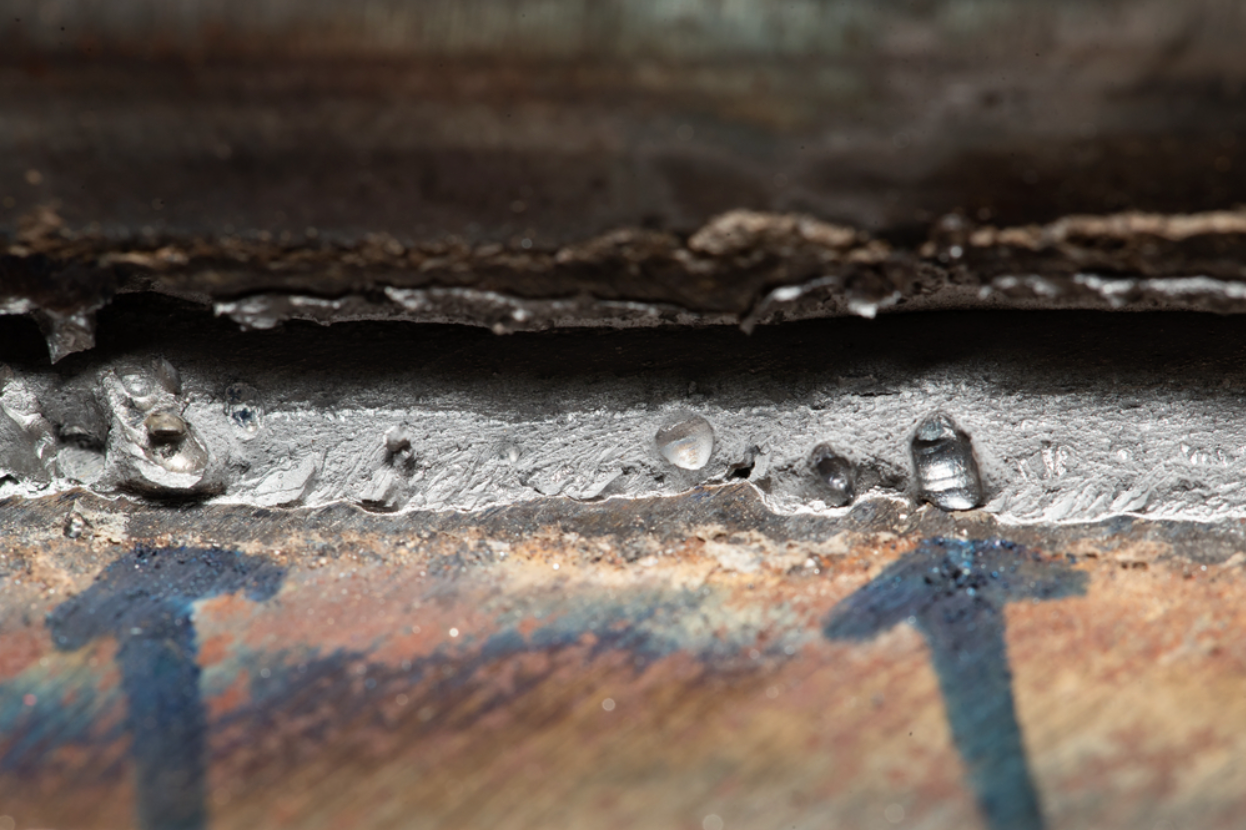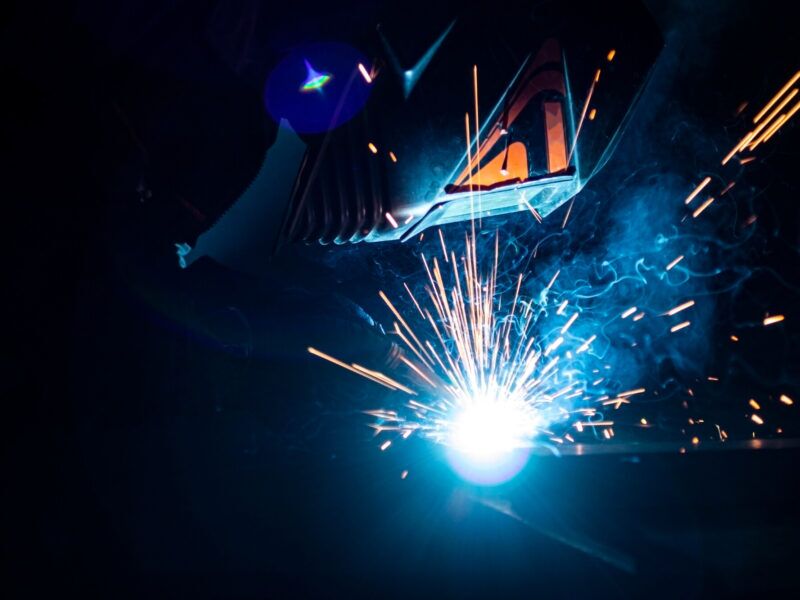Just How to Prevent Weld Undercut: Vital Tips for Welders
Understanding the Causes and Solutions for Undercut Welding in Steel Fabrication Procedures
In the world of steel construction procedures, the event of undercut welding poses a substantial challenge that demands a detailed understanding of its reasons and practical solutions. The intricate interplay of different factors during welding procedures can result in this unwanted phenomenon, affecting the architectural honesty and overall top quality of the bonded joints - Preventing weld undercut. By exploring the origin of undercut welding and exploring reliable remedial steps, fabricators can boost the standard of their workmanship and make sure the production of remarkable steel elements
Typical Reasons For Undercut Welding
Often overlooked in metal fabrication, undercut welding happens as a result of various aspects that demand precise interest and proficiency to be properly reduced. One common source of undercut welding is extreme warm input. When the warmth input is expensive, it can cause the melting and succeeding disintegration of the base product along the edges of the weld joint, developing a groove or undercut. In addition, improper welding methods, such as utilizing the wrong welding angle or travel rate, can also contribute to undercut formation. Insufficient protecting gas coverage is another key variable that can result in damaging. Inadequate gas protection falls short to shield the weld swimming pool properly, bring about oxidation and undercut issues. The selection of welding parameters, such as voltage, present, and cord feed rate, plays a considerable role in the occurrence of undercut welding. Recognizing these typical reasons is essential for implementing preventative procedures and ensuring premium welds in metal fabrication procedures.
Impact of Incorrect Welding Parameters
Unreliable welding criteria can dramatically jeopardize the honesty and high quality of bonded joints in metal fabrication processes. The influence of wrong welding parameters manifests in numerous means, leading to architectural weaknesses and problems in the welded parts. One essential element affected by incorrect welding parameters is the infiltration deepness of the weld. Insufficient warmth input due to reduced welding currents or excessively high traveling rates can cause insufficient fusion in between the base steels, resulting in insufficient joint infiltration and weakened bonds. Alternatively, too much heat input triggered by high welding currents or sluggish traveling rates can lead to extreme and burn-through reinforcement, developing a brittle and unpredictable weld framework. In addition, wrong criteria such as inappropriate voltage setups or wrong electrode angles can add to erratic weld grain accounts, absence of blend, and boosted possibilities of problems like damaging. Therefore, careful focus to welding parameters is extremely important to ensure the production of high-grade welds with the wanted mechanical properties and structural integrity.
Effect of Improper Torch Angle
Inappropriate torch angle in welding procedures can significantly affect the high quality and stability of the final weld joints in metal fabrication processes. The torch angle plays an essential function in determining the heat input and distribution throughout welding. When the lantern angle is incorrect, problems such as damaging can occur. Undercutting is a typical welding defect where a groove develops along the weld toe, compromising the joint and endangering its structural honesty.
A lantern angle that is as well high can lead to not enough infiltration, insufficient combination, and enhanced spatter. On the other hand, a torch angle that is too superficial can result in extreme infiltration, burn-through, and distortion of the base material. Preventing weld undercut. Proper torch angle is necessary for guaranteeing consistent weld high quality, stamina, and look
To stop undercutting and various other issues caused by incorrect lantern angles, welders need to be educated to keep the appropriate torch angle throughout the welding procedure. Regular monitoring and change of lantern angles during welding can assist accomplish audio welds with minimal flaws.
Function of Inadequate Welding Techniques

An additional aspect of inadequate welding techniques is inappropriate weld preparation. Insufficient cleaning of the base metals, incorrect joint layout, or insufficient side preparation can all add to damage welding. Poor shielding gas insurance coverage or making use of the incorrect type of gas can result in incomplete combination and the view website development of undercut flaws.
To deal with the duty of inadequate welding techniques in metal construction procedures, it is vital to give comprehensive training for welders. Proper education on welding parameters, joint prep work, and shielding gas selection can assist prevent undercut welding and ensure top quality welds in steel construction tasks.
Efficient Solutions for Undercut Welding
Addressing undercut welding in steel manufacture requires implementing efficient remedies to boost weld high quality and architectural stability. One of the main options to combat undercut is to change welding specifications such as voltage, existing, try this site and travel speed to guarantee proper heat input and blend. By fine-tuning these settings, welders can stop too much melting of the base metal and filler product, reducing the chance of undercut formation.
In addition, appropriate joint preparation is crucial in preventing undercut. Ensuring clean base steel surface areas without pollutants and making use of the proper bevel angle can help promote far better weld penetration and reduce the risk of undercut - Preventing weld undercut. Utilizing ideal welding techniques, such as weaving or oscillating the lantern, can additionally help in distributing warm uniformly and loading the weld joint sufficiently, lessening the opportunity of undercut flaws
In addition, choosing the proper welding consumables, consisting of electrodes and filler steels, is crucial in mitigating undercut. Making use of materials with appropriate chemical structures and mechanical homes can add to accomplishing sound welds with marginal undercut. Normal assessment and high quality control measures should additionally be executed to detect and deal with undercut problems without delay, ensuring the total integrity of produced steel parts.

Conclusion
Finally, understanding the causes and services for undercut welding in metal fabrication procedures is essential for achieving top quality welds. By attending to usual reasons such as inaccurate welding parameters, improper lantern angle, and insufficient welding techniques, welders can stop damaging and ensure strong, resilient welds. It is necessary to pay attention to these aspects and carry out reliable services to boost the total welding process and last product quality.
